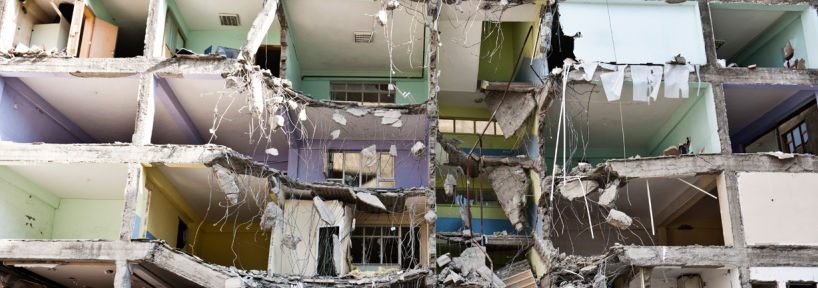


The Sendai Framework for Disaster Risk Reduction 2015-2030, which the world’s nations signed up to in March 2015, calls for increased input of science, technology and research to deal with the risks of natural disasters and manage their impacts. Strategies need to be developed to reduce disaster risks before an event, manage the emergency as it happens, ensure effective recovery afterwards, and enhance resilience.
But with population growth and the concentration of populations in urban areas, often with uncontrolled development and poorly-engineered infrastructures and buildings, the impacts of natural disasters are increasing. There is also the question as to whether climate change is exacerbating the frequency and intensity of Atlantic hurricanes, for example.
Indeed, even during the preparation of this Statement, many regions of the globe were hit by devastating natural disasters: mudslides in Sierra Leone and Colombia, floods in Bangladesh, hurricanes Harvey, Irma and Maria that hit various Caribbean islands and mainland America, earthquakes in Mexico and on the Iran-Iraq border, and wildfires in California, to name just a few.
This latest IAP Statement, therefore, is very timely, and sets out a series of four key recommendations, each with suggestions on how they might be applied.
The release of this statement is being coordinated by the Science Council of Japan and is officially launched on 25 November 2017 at the ‘International Conference on Science and Technology for Sustainability 2017 - Global Forum on Science and Technology for Disaster Resilience 2017’ being held in Japan on 23-25 November.
As well as the efforts of the Science Council of Japan, this IAP Statement builds on work of other IAP initiatives. For example, in 2016, IAP was a co-organizer of the United Nations Office for Disaster Risk Reduction (UNISDR) Science and Technology Conference on the implementation of the Sendai Framework held in Geneva, Switzerland, on 27-29 January 2016. The meeting brought together more than 700 researchers, policy makers, practitioners and other stakeholders. It also saw the launch of UNISDR’s Scientific and Technical Partnership, to which IAP has signed up as a member.
The preparation IAP Statements is led by one of its member academies (in this case the SCJ). A working group of experts nominated by IAP members is established to develop and refine the Statement. A Statement is released only when it has been approved by the IAP for Science Executive Committee and more than half of IAP members have endorsed its contents. Thus, the contents of this IAP Statement is supported by the credibility and independence of the majority of the world’s academies of science.